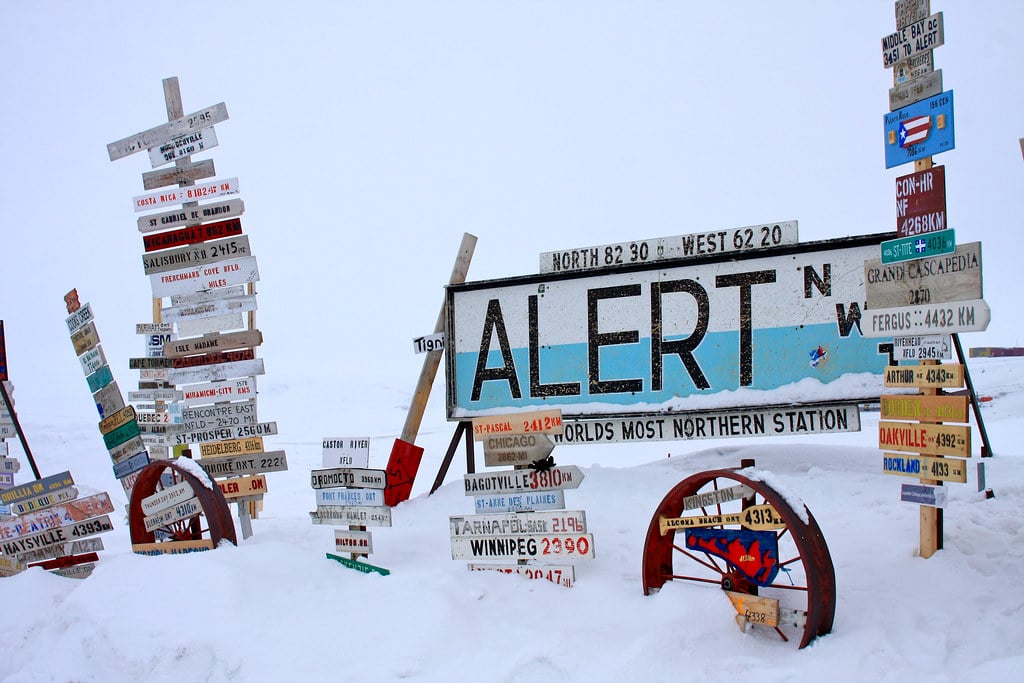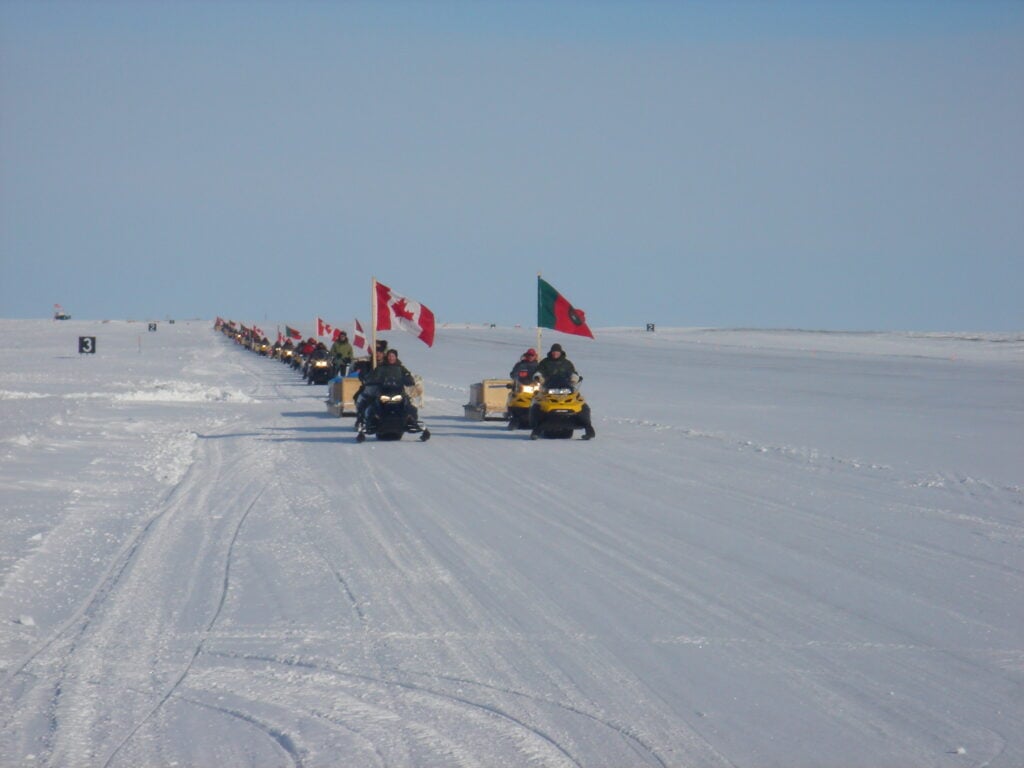This is the aptly named town of Alert in the Qikiqtaaluk Region, Nunavut, in Canada.
‘Town’ is a bit of a stretch, it’s more a series of buildings with a varying population. But with the site continuously inhabited since 1950 and its arctic location just 508 miles from the North Pole, this is the northernmost place on the planet with a permanent human presence.

Found on the northeast tip of Ellesmere Island – Canada’s northernmost land at the tenth largest island in the world – Alert is technically in a polar desert, as it receives only 6.23 inches of rainfall each year. The average temperature in the month of February is a chilly -34.6 °F (-37.0 °C) and the record low is -58.0 °F (-50.0 °C). For four months every year, Alert is cloaked in darkness. For another four months, the sun fails to make it above the horizon. It is inaccessible by road or by train.
Nonetheless, life has found a way. For nearly 75 years, humans have lived in some shape or form at this most extreme of locations.
Its dramatic name comes from a British ship, HMS Alert, who spent the winter between 1875 and 1876 at the site. HMS Alert’s crew, under Captain George Nares, were the first recorded Europeans to make it to the top of Ellesmere Island. Alert’s location lies where the Nares Strait (another legacy of the expedition) opens up into the Lincoln Sea in the Canadian Arctic.

The closest Canadian city is Iqaluit. Though it is also in the Nunavut territory, it’s a small matter of 1,300 miles away. Such is the separation of Alert from the rest of Canada, the site is, remarkably, closer to Moscow than it is to Ottowa: there are approximately 2,500 miles between Alert and the Russian capital, and 2,580 between Alert and the Canadian one.
While arctic explorations passed near the site of Alert in the late 19th and early 20th centuries, it was not until after the Second World War that it became a fixed location. Its first purpose was as a weather monitoring site, serving as one-fifth of the Joint Arctic Weather Stations network between Canada and the United States. Alert was the last of the bases to be built in 1950. Most of the construction work focused on making Alert accessible, with an ice runway and an all-season runway both built.
Read More: This is the world’s most remote post office
Despite these efforts, Alert was the site of a fatal plane crash just months after the base was established. Nine members of the Canadian Air Force died while attempting to make an airdrop to Alert.
Military operations began in the 1950s. Alert was valuable due to its proximity to the then Soviet Union, and the base expanded massively during the 1960s. It became known as the Canadian Forces Station Alert (CFS Alert), and had, at its peak, 215 personnel stationed. It added yet another role in the 1980s when the Dr. Neil Trivett Global Atmospheric Watch Observatory was opened just outside of Alert. This is the northernmost of 31 stations operated by the World Meteorological Organisation.

There is no longer a technical population of Alert, but the series of purposes it continues to serve ensures that people are still living here year-round. CFS Alert still operates, as does the observatory, while the weather station and airport remain in use.
Much of their work is monitoring global weather patterns, but Alert recently experienced record-breaking weather itself. On July 14, 2019, the temperature was recorded at 69.8° F (21.0 °C). The average high during July is just (44 °F) 7 °C.






1 Comment
ro6o67e59e